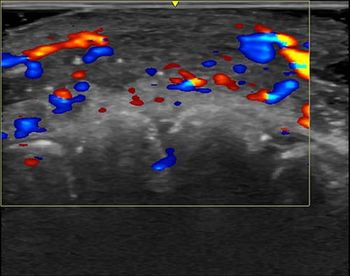
Physical therapists share benefits of PACS
The benefits of PACS are well established across several medical disciplines. But, until recently, little information appeared in the literature regarding the use of PACS by nonphysician healthcare providers.
The benefits of PACS are well established across several medical disciplines. But, until recently, little information appeared in the literature regarding the use of PACS by nonphysician healthcare providers.
A new paper (J Digit Imaging 2006 Jul 12 [Epub ahead of print]) looks at the impact of PACS on an academic physical therapy practice. The study was conducted at Brigham and Women's Hospital in Boston, where 12 physical therapists perform an average of 2000 rehabilitation visits per month.
"We found that implementation of PACS in an academic physical therapy department markedly improved access and viewing of imaging studies at the point of care," said Reg B. Wilcox, clinical supervisor in Brigham and Women's Department of Rehabilitation Services.
Prior to PACS implementation in the hospital physical therapy department, therapists viewed imaging studies in only about 1% of cases, because they had little time to retrieve film. Implementation of PACS resulted in a substantial increase to 84% in the proportion of imaging studies viewed by PTs at the point of care.
The level of the physical therapist's education seemed to play a role.
"We found that PTs who had completed a transitional doctor of physical therapy degree, which included training in diagnostic imaging, adopted PACS more readily," Wilcox said.
Post-PACS, PTs placed a higher value on access to imaging studies and felt that image viewing at the point of care improved their clinical decision making, he said.
Based on experience at Brigham and Women's, Wilcox recommends that radiologists and hospital administration consider the potential patient care benefits of access to PACS for nonphysician healthcare providers when implementing PACS in any facility.
He cautioned that the impact viewing imaging studies had on decision making was not measured, however.
"Our primary outcome measure was the proportion of patients' whole imaging studies viewed by PTs at the point of care," he said.
The study did not assess whether the change in practice post-PACS implementation actually changed patient management or outcomes. Additional studies measuring the impact of PACS usage on clinical decision making by nonphysicians and patient outcomes are needed, Wilcox said.
"This is an area we are now exploring at Brigham and Women's," he said.
For more online information, refer to Diagnostic Imaging's
Newsletter
Stay at the forefront of radiology with the Diagnostic Imaging newsletter, delivering the latest news, clinical insights, and imaging advancements for today’s radiologists.




























